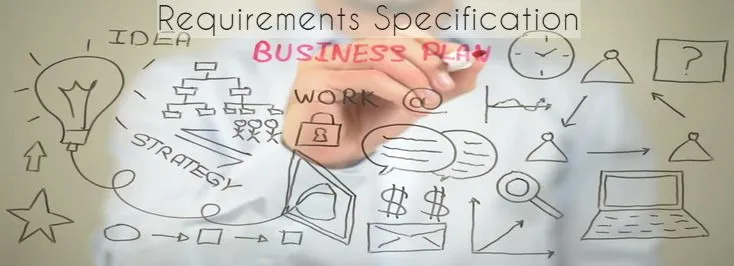
Requirements Specification: Creating the Essential Document for Your Project’s Success

A Software Requirements Specification (SRS) is the main document defining what should be done and which results are expected from the project. Formulated properly, specs make the development process more transparent and shield you from misunderstandings with your developers. Let’s consider how to organise requirements gathering, what to include in your specs and which tools to use.
How It Usually Happens
Nobody knows why, but the every specs preparation process tends to end up the same. Just think back to your last project development period:
- You decide to launch something, so you have a reason to celebrate, don’t you? Absolutely!
- You hold a meeting with senior executives and investors to gather their vision of the result.
- Your consultants prepare points of reference, bundling the information collected into a document template to cover the requirements of executives and make it look attractive.
But how useful are specs like these?
They’re irrelevant in practice and have only one goal - to minimise negotiation and approval time and, if possible, contribute a rough project estimation. These specs will hardly be used during the development process and your developers will have to clear up any sticking points as they go anyway. This results in unexpected costs and sometimes in unintended outcomes.
How to Make It Right
Now let’s try to make the process above more systematic. This way you can derive tangible benefits and save considerably on time and reworking costs.
Here’s a step-by-step process:
- Organise a meeting with senior executives
This step is of high importance. The main reason for this meeting is getting developers and the people working in the company acquainted. Of course, all ideas, even the most radical ones, should be recorded, but it is by no means a given that all of them will see the light of day. You can revert to the discussion once there’s enough information to make the right choice. - Establish working groups
It’s not only the developers who should define the group for your project; your company should also assign people to be engaged in the project and take an active part in the decision-making process to avoid the mess of duties and abilities. Moreover, it is better to have in black and white that only the working group can perform the delivery-acceptance procedure. - Coordinate working techniques, tools and documentation structure
Your team should clearly understand what will be applied and how it works. - Prepare your questionnaire
Prepare a list of questions for developers from your side and try to provide them with the most detailed answers if they have any queries themselves. Involve not only executives but also those who will actually interact with the product, especially if your software is intended for internal use. - Hold interviews
This is an oral discussion of the various processes with your internal specialists. It should be well-organised and practical in scope. The developers may need to clear up some disputed points from the questionnaire or other issues from their experience. Create a description of your internal processes and problems to be solved. - Define key business processes
Decide on core business processes and make a checklist to decide which of them should be considered more fully. Emphasise these priorities to set the right order of task fulfilment for the developers. - System requirements, aims, success criteria
Once all the primary information is ready, it’s time to get back to your aims. Together with the developers you discuss technical opportunities and set goals which will dictate whether or not the project is a success.
Time for the Grand Unveiling
When everything is clarified and approved, it’s time for your specs to go public. The document should contain a detailed description of every business process to be optimised and digitised. It’s a good idea to accompany your specs with schematics, diagrams and additional comments if needed. The specifications doc should not be a hundred-page doorstop but a comprehensive full-scale description to deliver a winning argument when any questions arise.
Technical specifications composition is a laborious process but when done well it will save you from dashed hopes and broken dreams. With this document in hand the chances are you’ll get a near-real representation while being on the same page as your developers, helping you achieve the desired results. If you need help or advice, contact our specialists to start working on your specs.





